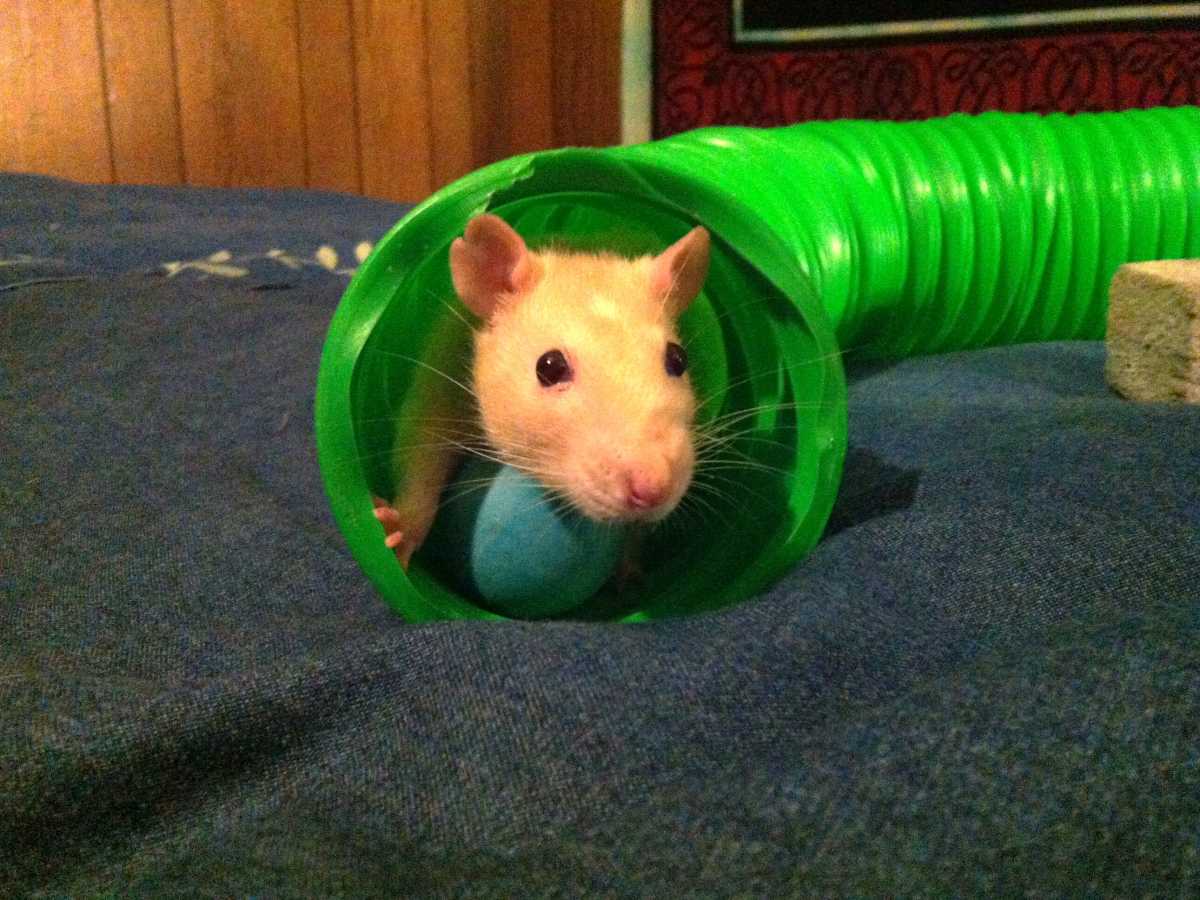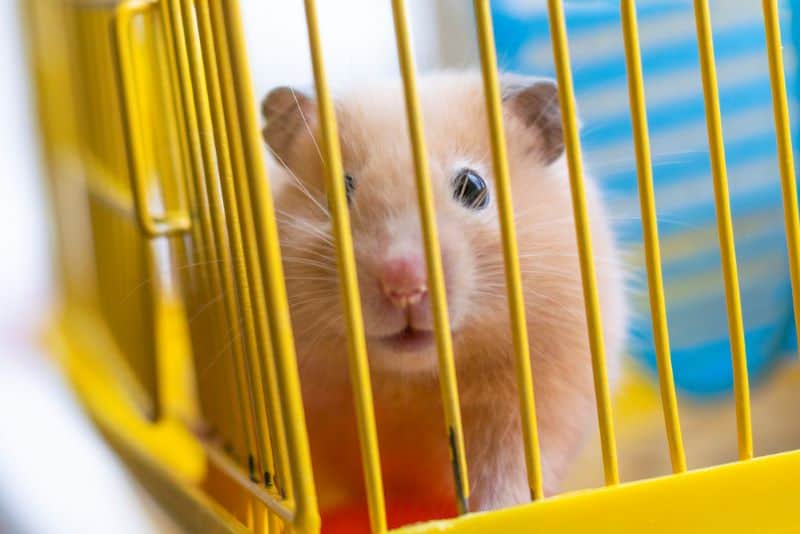As pet owners, we want to provide our furry friends with a clean living environment. If you own a hamster, it’s important to regularly clean and sanitize its cage to prevent the spread of germs and keep your hamster healthy. In this blog post, we’ll go over a step-by-step cleaning and sanitizing procedure that will ensure your hamster’s cage is always squeaky clean. Let’s get started!

1. Daily cleaning of food bowls and water bottles
It is important to maintain a clean and hygienic living space for your furry pet. This includes daily cleaning of food bowls and water bottles. Before cleaning, it is necessary to remove all the accessories, food dishes, and water bottles from the hamster’s cage. Next, they should be washed with a mild soapy mixture or just hot water if not visibly dirty. Spot-cleaning everyday ensures the hamster’s living space is free from any buildup of dirt, bacteria or mold that could cause health issues. With this simple yet essential practice, your hamster will live in a healthy environment, reducing the risk of illnesses and extending their lifespan.

2. Multiple rinsing to ensure no bleach residue is left on surfaces
When cleaning and disinfecting a hamster cage, it is important to ensure that no bleach residue is left behind on surfaces. This can be achieved by performing multiple rinses with clean water after using bleach on the cage. Care should be taken to completely rinse all detergent residues and thoroughly dry the surface prior to applying bleach in order to avoid dilution of the bleach. Once the surface has been cleaned and disinfected with bleach and water solutions, it should be rinsed off with clean water before air drying.
This helps to ensure a safe and clean environment for the hamster, free from any harmful germs or chemicals. By following these important steps, hamster owners can keep their furry friends healthy and happy in their clean and well-maintained homes.

3. Weekly cleaning of hamster cage
It’s important to keep your hamster’s cage clean and sanitized to ensure their health and well-being. In addition to daily cleaning of their food bowls and water bottles, a weekly cage cleaning is necessary. This should involve removing all bedding and accessories, washing and soaking the cage, and disinfecting it to remove germs. Antibacterial soap or white vinegar can be used to clean the cage, and multiple rinses should be done to ensure no residue is left behind. Before starting the cleaning process, it’s recommended to empty and dust the enclosure.
For a DIY cleaning option, bleach can be used, but it’s important to follow proper safety precautions. A washcloth or hand towel can be used for cleaning, and cleaning solutions can be found in All Surface Clean (ASC) animal housing rooms. Remember, keeping a clean hamster cage is crucial for your furry friend’s health and happiness.

4. Disinfection of cage to remove germs
After the weekly cleaning of the hamster cage, it is essential to disinfect the cage to remove any lingering germs. This step is critical to ensure the hamster stays healthy and happy. A mixture of vinegar and water or a hamster-friendly disinfectant from pet stores can be used for this purpose.
Alternatively, antibacterial dish soap can also be used as a cleaning agent. It is important to use products that are not too harsh or scented to avoid harming the hamster. Hand-washing procedures should also be implemented to prevent cross-contamination. Overall, proper disinfection will help keep your hamster’s house clean and germ-free.

5. Using antibacterial soap or white vinegar to clean cage
The fifth step in the cleaning and sanitizing procedure for a hamster’s house is to use antibacterial soap or white vinegar to clean the cage. It is important to clean the cage thoroughly to eliminate traces of ammonia, bacteria, and concentrated urine. White vinegar is one of the best natural solutions to clean the cage because it is mildly acidic and mildly antimicrobial. One can use undiluted white vinegar as a cleaner, or one can dilute it with water and put the mixture in a spray bottle.
Another option is to use antibacterial soap, which is available in pet stores. Alternatively, one can use a mild hand soap. Regardless of the cleaning solution used, it is essential to rinse the cage multiple times to ensure that there is no residue left on the surfaces.

6. Emptying and dusting the enclosure before cleaning
Before beginning the cleaning process, it’s important to empty and dust the hamster enclosure. This involves removing all bedding and any debris that may have accumulated over time. This step is crucial in ensuring that the cage is completely clean and ready for the next round of bedding. Once everything has been removed, use a damp cloth or vacuum to remove any dust or loose particles that may still be present. By doing this, you will provide a clean and fresh start for your hamster and prolong the life of their cage. With a clean and dust-free cage, your hamster will be able to enjoy a healthier and happier living environment.
:strip_icc()/GettyImages-522115582-37188d8634d247ec8f1a82b5f2bb52c0.jpg)
7. Use mild soap or cage cleaning solutions to scrub the cage
To maintain a clean and healthy environment for hamsters, it is necessary to clean their cages on a regular basis. Using a mild soap or a cage cleaning solution to scrub the cage is a great way to ensure the removal of any dirt or grime. It is essential to empty and removes all bedding and any stuck bedding before beginning the cleaning process. Afterward, use a scrub brush and warm water with soap solution to scrub all parts of the cage. If you prefer DIY cleaning options, a mild bleach solution can be used for effective cleaning.
Don’t forget to use a damp washcloth or pet-friendly wipe to clean the areas with white crusty pee stains. Remember to rinse everything thoroughly and quickly dry the cage to prevent any moisture buildup. This cleaning method combined with daily spot-cleaning and weekly disinfection of the cage will keep your hamster’s living space clean and healthy.

8. DIY cleaning option using bleach
For those who prefer a DIY option for cleaning their hamster’s cage, bleach can be a useful tool. However, it is important to create a fresh diluted bleach solution daily, as bleach solutions lose their efficacy after 24 hours. It is also critical to add bleach to cool water, wear gloves and goggles when mixing it, and use a funnel to avoid splashing. To use bleach for cleaning and disinfecting, mix 3/4 cup of bleach in one gallon of water and scrub the cage with a washcloth or hand towel. Rinse thoroughly and make sure there are no wet spots before returning your hamster to their freshly cleaned home.
Remember, there are also other cleaning solutions readily available, such as All Surface Clean (ASC), which can be found in animal housing rooms. Whatever option you choose, always prioritize your hamster’s health and strive to maintain a clean and safe environment for them to thrive in.

9. Using a washcloth or hand towel for cleaning
To ensure proper cleaning of a hamster’s house, it’s important to use the correct tools. A washcloth or hand towel can come in handy for wiping down surfaces and scrubbing tough spots. It’s recommended to use a damp, pet-friendly wipe or washcloth to clean the hamster’s rear end, making sure to dry them off quickly with a towel. Squeezing as much water as possible from cleaning tools and allowing them to dry properly can prevent bacteria growth. When cleaning the hamster’s cage, it’s best to use a fresh, clean washcloth and mild soap or cage cleaning solution. It’s important to follow all cleaning and sanitizing procedures regularly to ensure a happy and healthy home for your furry friend.

10. Finding cleaning solutions in All Surface Clean (ASC) animal housing rooms
In addition to the various cleaning methods discussed for hamster cages, finding cleaning solutions can be made easier by checking in with All Surface Clean (ASC) animal housing rooms. They offer animal-safe cleaners that can be used to scrub surfaces and disinfect cages to remove germs. Their disinfectant solutions can be mixed and applied using low pressure to ensure a thorough cleaning. It is recommended to rinse all surfaces and feed and water bowls with water before allowing them to dry.
When finding cleaning solutions, it is important to ensure they are safe for animals and meet quality standards. By incorporating these cleaning practices, hamster owners can provide a healthy and clean environment for their furry friends to thrive.
- From Babies To Adults: Navigating Hamster Development Milestones - April 14, 2024
- From Seeds To Treats: Unveiling The Secrets Of Hamster Diet And Behavior - April 14, 2024
- A Culinary Adventure: Discovering The Delightful Hamster Diet Variety - April 14, 2024


